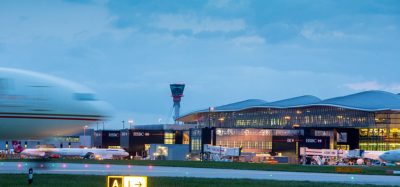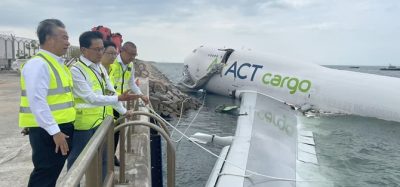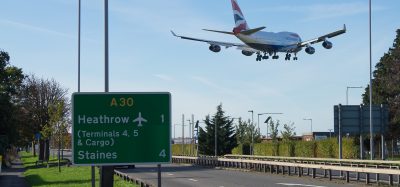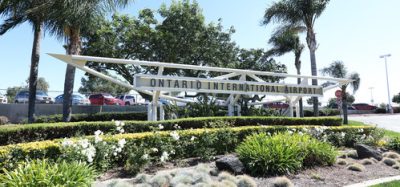Development of friction testing in the UK
Posted: 28 March 2008 | Paul Fraser-Bennison, Aerodrome Standards Policy Officer, UK CAA Safety Regulation Group | No comments yet
On 6 February 1958, an aircraft crashed whilst making its third attempt to take off from Munich’s Reim Airport. Twenty-three of the passengers and crew on board were killed. After a lengthy investigation, the cause of the accident was identified as slush on the runway. Fifty years later, this event lingers in the public consciousness because some of the casualties were star players from Manchester United Football Club. It is also remembered in the aviation world for the important part it played in the study of contaminant drag and its effect on aircraft tyres, as well as in the wider context of the overall assessment of runway friction, work that still continues today.
On 6 February 1958, an aircraft crashed whilst making its third attempt to take off from Munich’s Reim Airport. Twenty-three of the passengers and crew on board were killed. After a lengthy investigation, the cause of the accident was identified as slush on the runway. Fifty years later, this event lingers in the public consciousness because some of the casualties were star players from Manchester United Football Club. It is also remembered in the aviation world for the important part it played in the study of contaminant drag and its effect on aircraft tyres, as well as in the wider context of the overall assessment of runway friction, work that still continues today.
In the UK, the aerodrome licence holder is responsible for assuring adequate runway surface friction characteristics are maintained. ICAO Annex 14 Volume 1 contains Standards and Recommended Practices (SARPs) relating to runway friction and these are interpreted and applied in the UK, as set out in the CAA’s publications CAP 168, ‘Licensing of Aerodromes’ and CAP 683 ‘The Assessment of Runway Surface Friction for Maintenance Purposes.’
The measurement of runway friction is conducted to help ensure that runway maintenance is carried out effectively, to maintain acceptable friction levels. Data from friction assessments may also be used, in accordance with prescribed procedures, to inform aircrew about the state of a runway under certain weather conditions. Research, in which the UK CAA is playing a leading role, is also being conducted to investigate means of enhancing the use of friction data across a broader range of operational conditions.
Join us live: Shaping the Next Generation of Hold Baggage and Air Cargo Screening
Join us live for an insightful webinar on 11th December at 14:00 GMT, in collaboration with Smiths Detection, as we explore the strategic balance of operational efficiency, regulatory compliance, and sustainability in high-volume security environments.
This session offers a focused look into future-proofing your security strategy.
Key learning points
- Cost Reduction: Strategies to minimize bag travel time while simultaneously reducing operational costs.
- Regulatory Roadmap: Insights into the next wave of regulatory changes and their impact on future investment decisions.
- Sustainable Systems: Practical approaches to building sustainability into security systems and lowering the total cost of ownership (TCO).
- Scalable Solutions: Real-world examples of scalable systems supporting current airport growth and preparing for tomorrow.
Register now for expert insights, case studies, and actionable strategies on operational efficiency!
The maintenance of acceptable runway surface friction characteristics, requires regular measurement and action, such as rubber removal, to ensure a safe environment for aircraft movements. In 2000 the CAA published guidance, titled ‘CAP 683 Procedures for Runway Friction Classification and Monitoring’, to assist aerodromes and with the intention of developing a national runway friction database. Continuous Friction Measuring Equipment (CFME) manufacturers design their machines to be deployed under controlled conditions, typically on a dry runway surface with a calibrated film of water sprayed just in front of the measuring wheel. This permits accurate readings to be gathered and ensures repeatability. A key element of the process is for a picture to be built up of the runway’s health over time and to be able to target maintenance on those areas that are deteriorating; touchdown zones are an example of where problems may arise, as tyre spin-up often leaves rubber deposits.
Provided an aerodrome assesses runway surface friction characteristics regularly, analyses the trends and intervenes to restore levels of grip in a timely manner, the runway should perform as expected. Regular friction measurement runs enable aerodrome operators to manage the health of runways in a planned way and maintain levels of grip at the Design Objective Level (DOL). They can then initiate maintenance when friction levels fall below the Maintenance Planning Level (MPL). ICAO Annex 14 refers to a ‘portion’ and to a ‘minimum of a 100m length’ in relation to defining such areas. In the UK, the CAA has developed this to define what a ‘portion’ of the runway means and how the figure of 100m should be regarded for the purposes of friction measurement. Thus, a portion of the runway is one of three sections, where the runway width is divided into 3 parts running the entire length of pavement; these are called the Central, Left Outer and Right Outer trafficked portions (e.g. for a 45m wide runway, each portion would be 15m wide. On narrower runways the Central trafficked portion remains 15m in width and the width of the two outer portions is reduced).
The concept of the rolling average by portion, is used to order the data and present these in a meaningful way. The CFME gathers data in 10m increments along the runway and after each portion has been measured, the machine sums the averages and produces a report showing the friction levels, highlighting any areas of non-compliance.
In the late 1990s, evidence began to show that the use of CFME should not be considered when a runway is “contaminated” as the results could not be relied upon. A contaminated runway is the international definition, that indicates that the depth of water over the runway is greater than 3mm, or slush, snow or ice is present. It is therefore important that water depths remain below 3mm, or snow and slush is removed by the snow team.
In view of this evidence, the CAA reviewed its position and in early 2004 published Edition 2 of CAP 683, which was re-titled “The Assessment of Runway Surface Friction for Maintenance Purposes.” As the title indicates, the emphasis was focussed on the maintenance of runway friction, in recognition of the fact that attempts to assess friction when there were deposits of slush or snow on the runway, yielded unreliable results.
A runway on which there is compacted snow and ice is a different matter as, under these conditions, CFME can give usable results (though the water film spray isn’t used). Snow and Ice Tables can be used to interpret the data and give friction levels in plain language terms such as ‘Good’ or ‘Poor’: it should be borne in mind however, that these words are somewhat subjective.
Friction readings may also be used to provide limited operational information. For example, should an assessment show that levels of grip have fallen to the minimum friction level, a runway must be notified as ‘may be slippery when wet.’ This would normally be promulgated by NOTAM, alerting aircrew of the need to take account of the reduced surface friction in their aircraft’s performance calculations. If the reduction in friction is limited to a certain area or areas, this information can be defined in the NOTAM to improve flight crews’ knowledge and understanding of the issue and assess the impact on their own operation. A runway should be notified as ‘may be slippery when wet’ when the lowest average rolling 100m reading by portion, is below the Minimum Friction Level (MFL).
The CAA continues to keep abreast of developments within the industry. New runway surface materials are being introduced and a number of runway resurfacing projects are being planned. The CAA is currently engaged in discussions with industry on all aspects of runway friction, including the importance of maintaining adequate friction levels during resurfacing projects. As a result of the latest information and experience, CAP 683 has been reviewed again and a revised draft has been placed on the CAA’s website (www.caa.co.uk/ publications), inviting comment from industry. Once all comments have been gathered and assessed, new and updated guidance material will be published later this year.
The CAA also continues to investigate the use of CFME as an operational tool for use on contaminated runways. Research conducted recently with ESDU (formerly the Engineering Sciences Data Unit) has shown that it is possible to measure both the depth of contaminant, and the drag exerted by it on the measuring wheel. Early indications suggest that, under certain circumstances, figures equating to the friction characteristics of a contaminated runway could be derived. However, the significant operational challenges remain as to how to obtain useable data in what may be a rapidly changing environment, and how to correlate the information so that it can be used to predict aircraft performance. ICAO has now established a friction task force, comprising a multi-disciplinary international team of experts and stakeholders from across industry, to further improve the use of CFME for maintenance and, more significantly, to see how CFME data can be obtained and used across a wider spectrum of operating conditions.
The CAA will continue to pursue a proactive approach and support efforts to develop best practice methods of assessing runway surface friction characteristics, to improve runway safety.
About the author
Paul Fraser-Bennison is a Policy Officer with the CAA Aerodrome Standards Department, with responsibility for CAP683 – The Assessment of Runway Surface Friction for Maintenance Purposes. He is a UK member of the ICAO Aerodrome Operations and Services Working Group Friction Task Force. Prior to joining the CAA, he spent 13 years in Airfield Engineering and Operations at Manchester Airport.
Join our free webinar: Revolutionising India’s travel experience through the Digi Yatra biometric programme.
Air travel is booming, and airports worldwide need to move passengers faster and more efficiently. Join the Digi Yatra Foundation and IDEMIA to discover how this groundbreaking initiative has already enabled over 60 million seamless domestic journeys using biometric identity management.
Date: 16 Dec | Time: 09:00 GMT
rEGISTER NOW TO SECURE YOUR SPOT
Can’t attend live? No worries – register to receive the recording post-event.

















